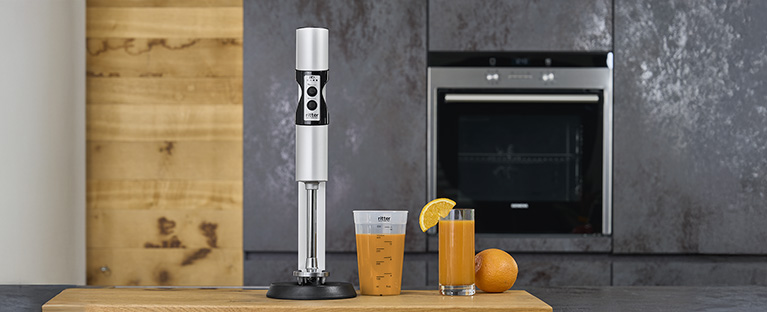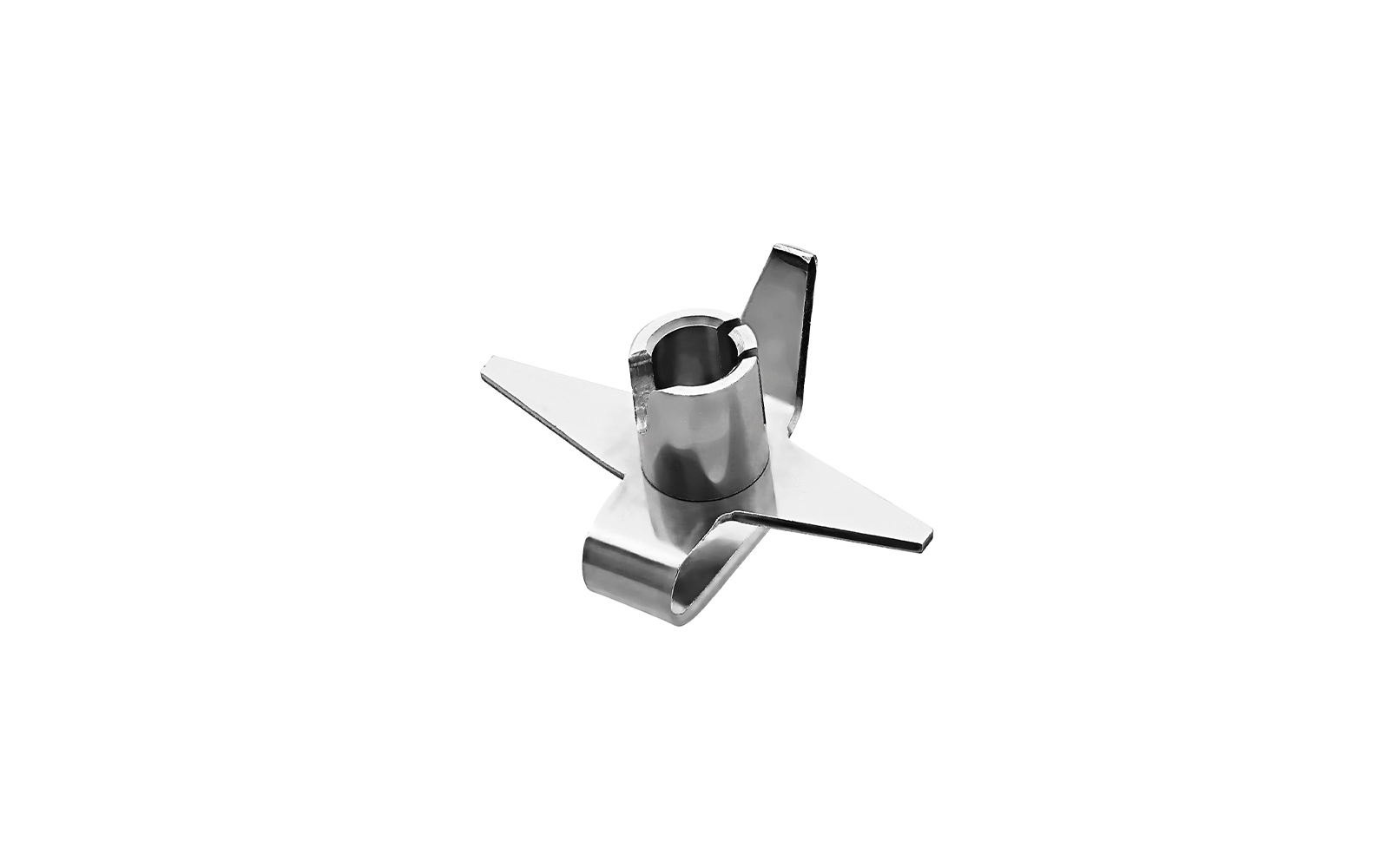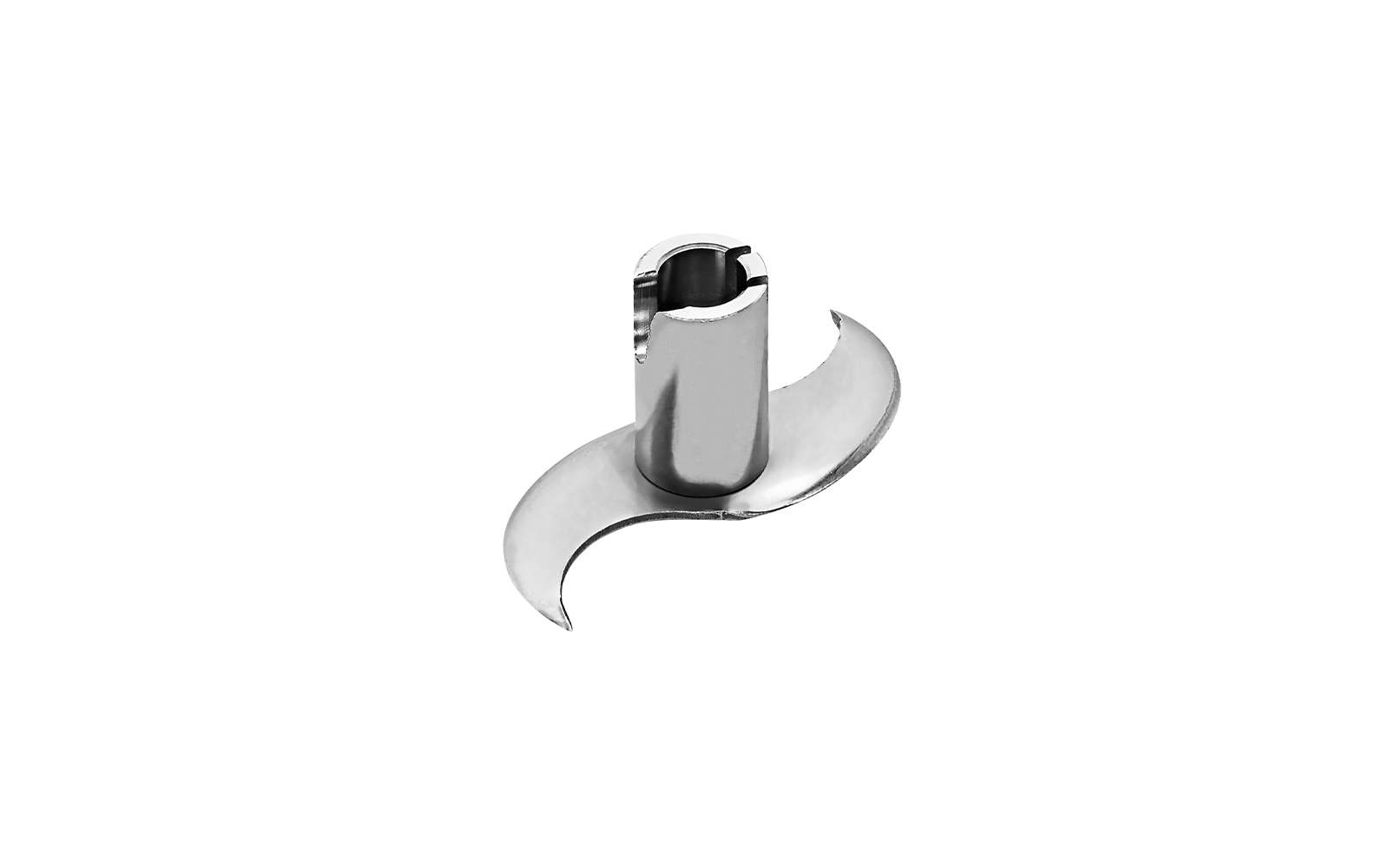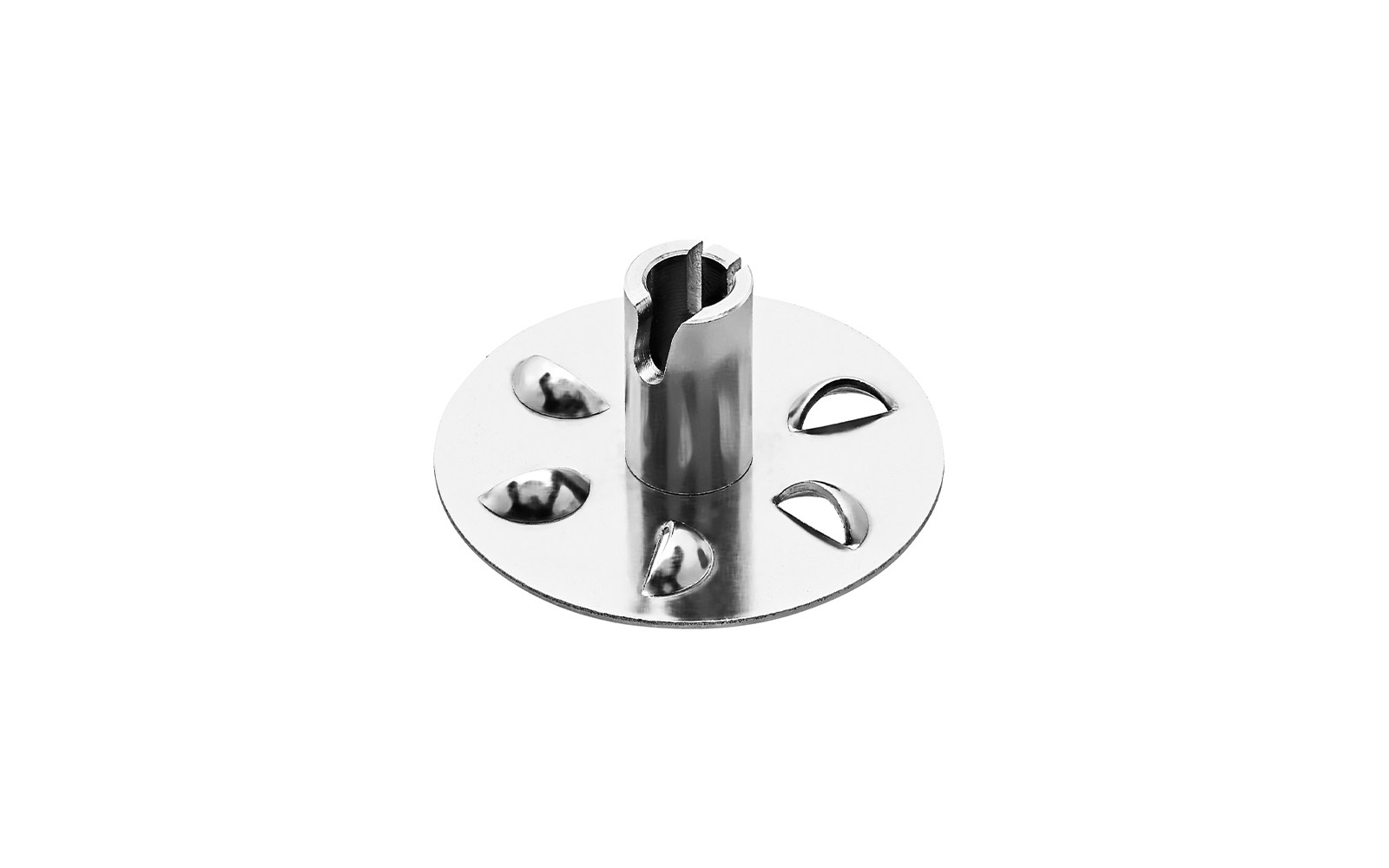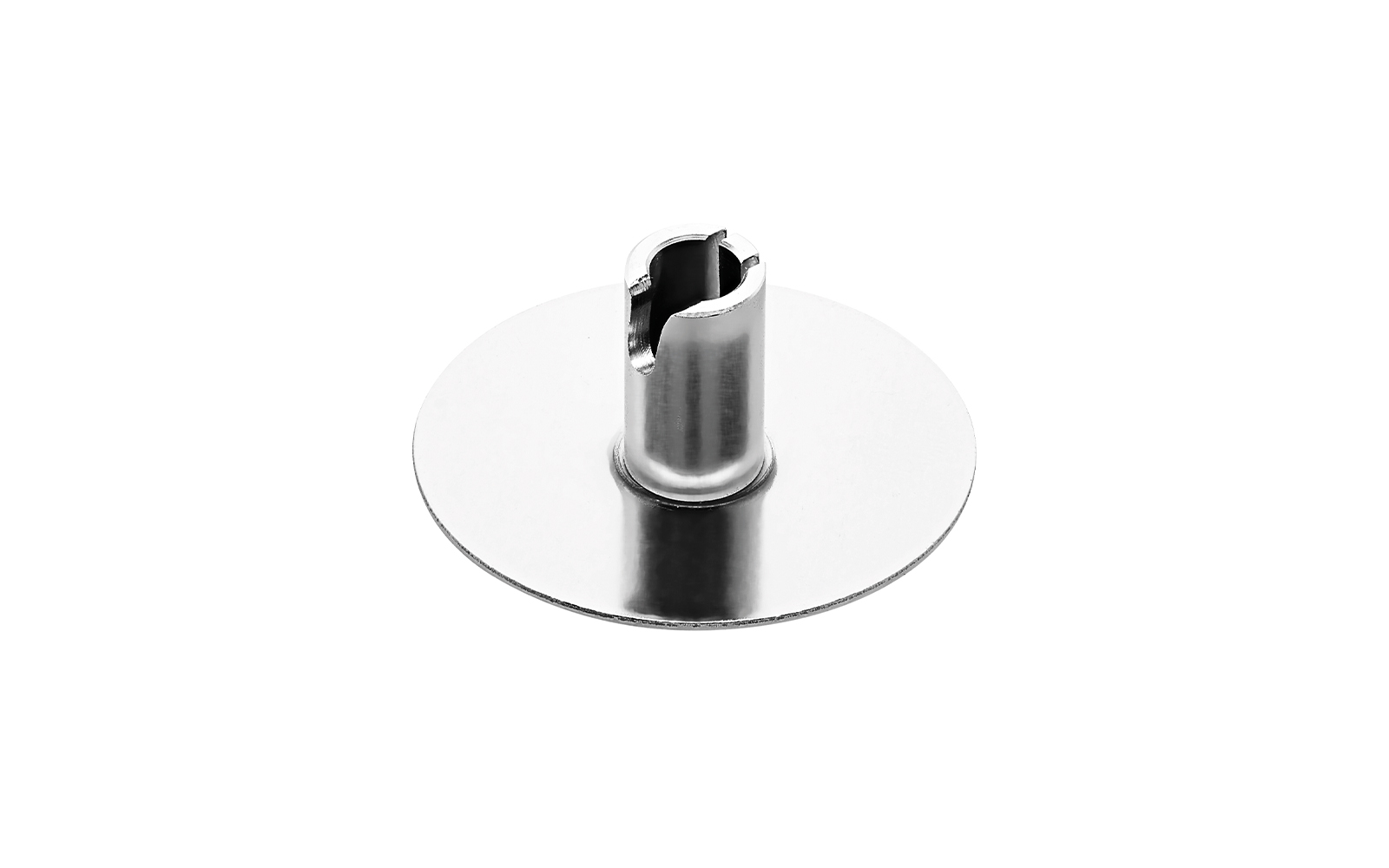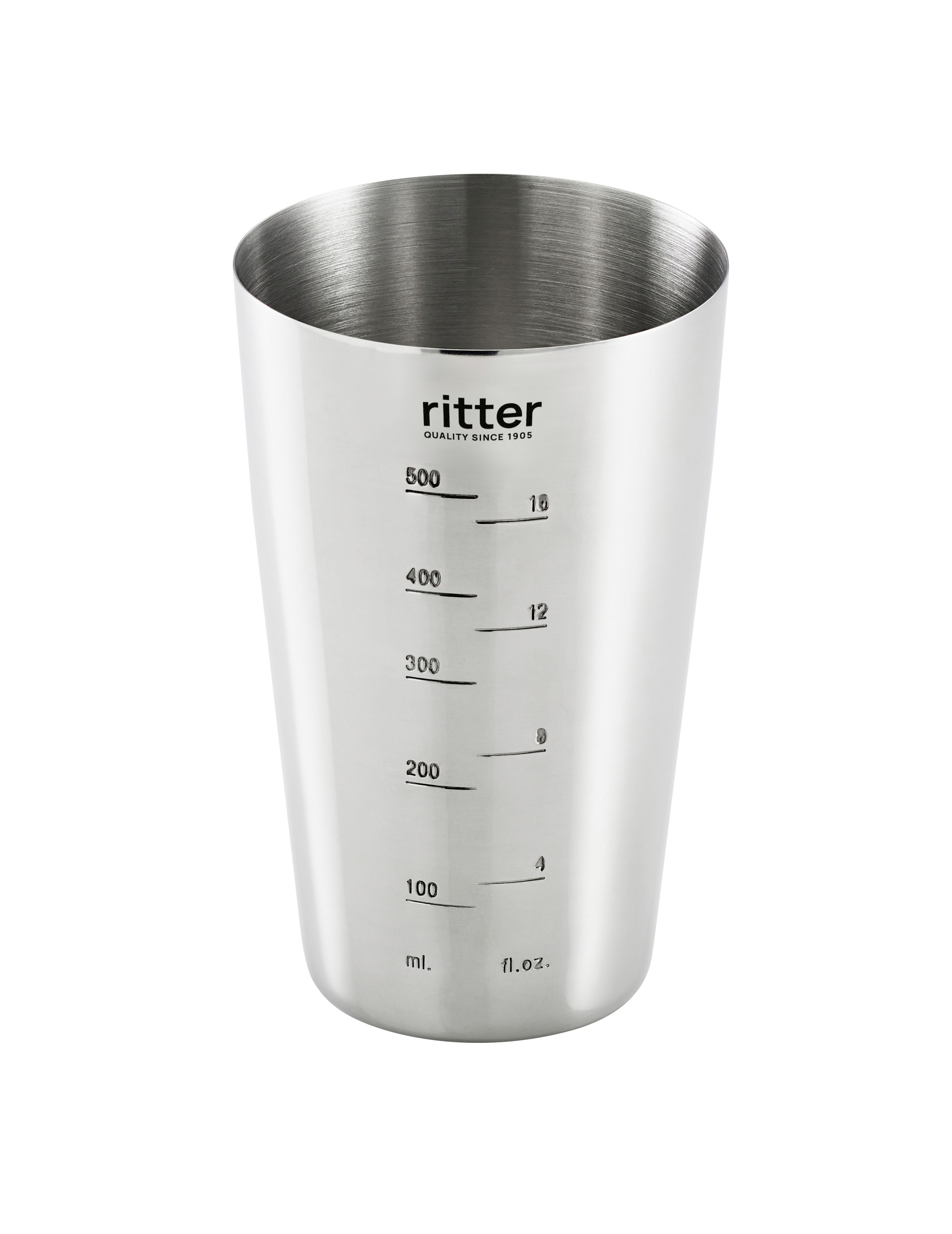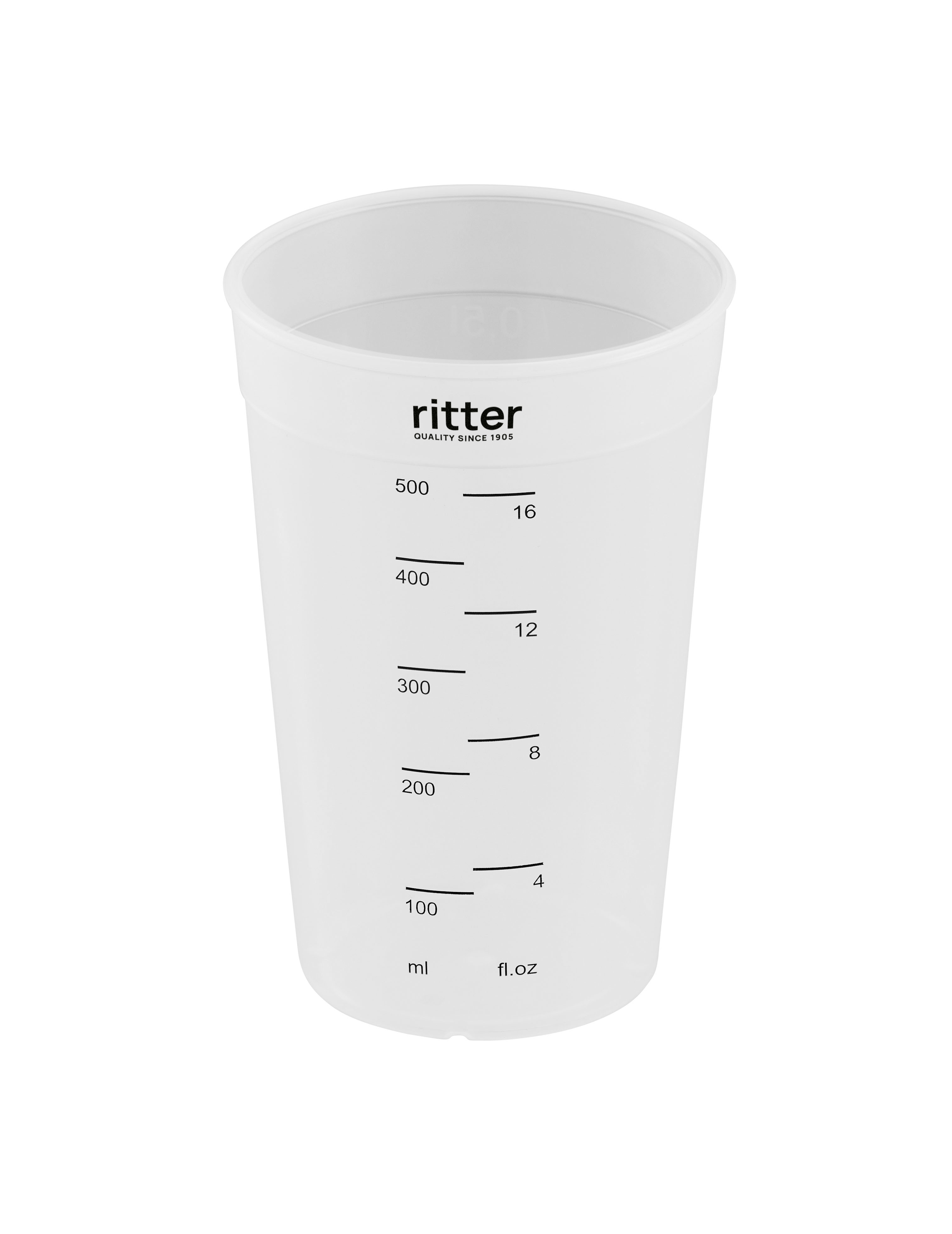Advice for use
Operation
The ritter built-in hand blender is powered by a premium lithium-ion battery – no need for inconvenient cables, but absolute freedom when cooking – any time and any place without a socket.
The most important thing to remember is: Always power up the hand blender once it is in the container. Same goes for powering it down: Always switch the blender off first and then remove it from the container.
To switch on the blender, first press the unlock button and keep it pressed. Within two seconds, you must press the power button and the hand blender will run. During processing, you only need to keep the unlock button pressed. If the unlock button is released, the hand blender switches off. The speed levels can be switched through during operation by briefly pressing the power button.
For easier processing, the following generally applies: more liquid makes the process easier than none.
Important!
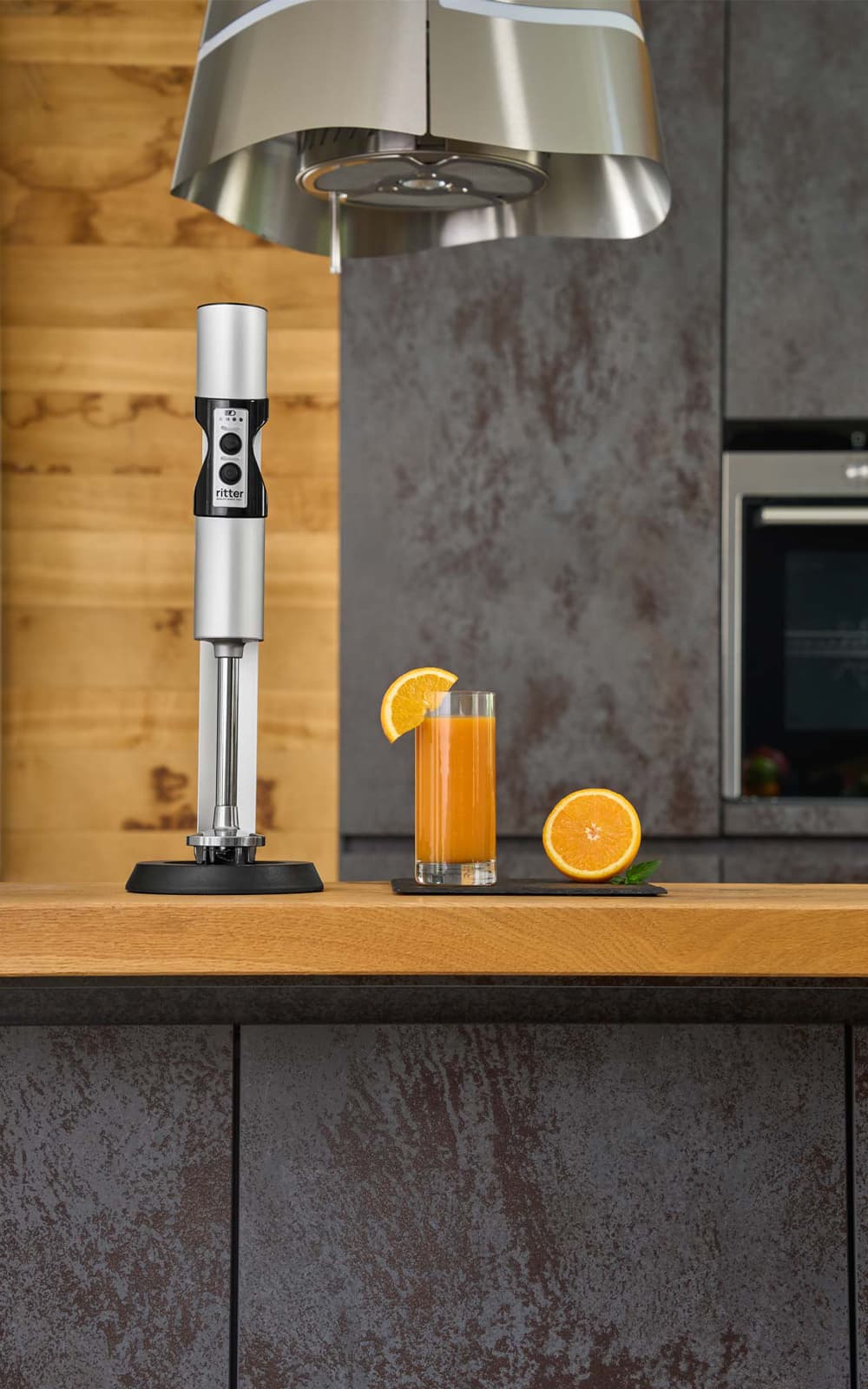
Your benefits with a hand blender from ritter
- Quality product made in Germany
- High quality materials
- Powerful battery
- Automatic safety shut-off
- Different attachments
- Wide range of preparation options
- Reparability
Discover the cordless hand blenders in the timeless
Attaching/replacing attachments
The attachments can be changed quickly, easily and in just a few simple steps. To attach the desired attachment, grip it with a tea towel and place it on the drive shaft. Make sure that the pin is firmly seated in the recess of the attachment. To remove, grip the attachment again with a tea towel and pull it off carefully.Caution, risk of injury!
- Switch off the hand blender before attaching or removing attachments.
- Keep your fingers away from the buttons.
- The blades of the attachments may be sharp (e.g. cutting blade)! Therefore, do not touch them with bare hands.
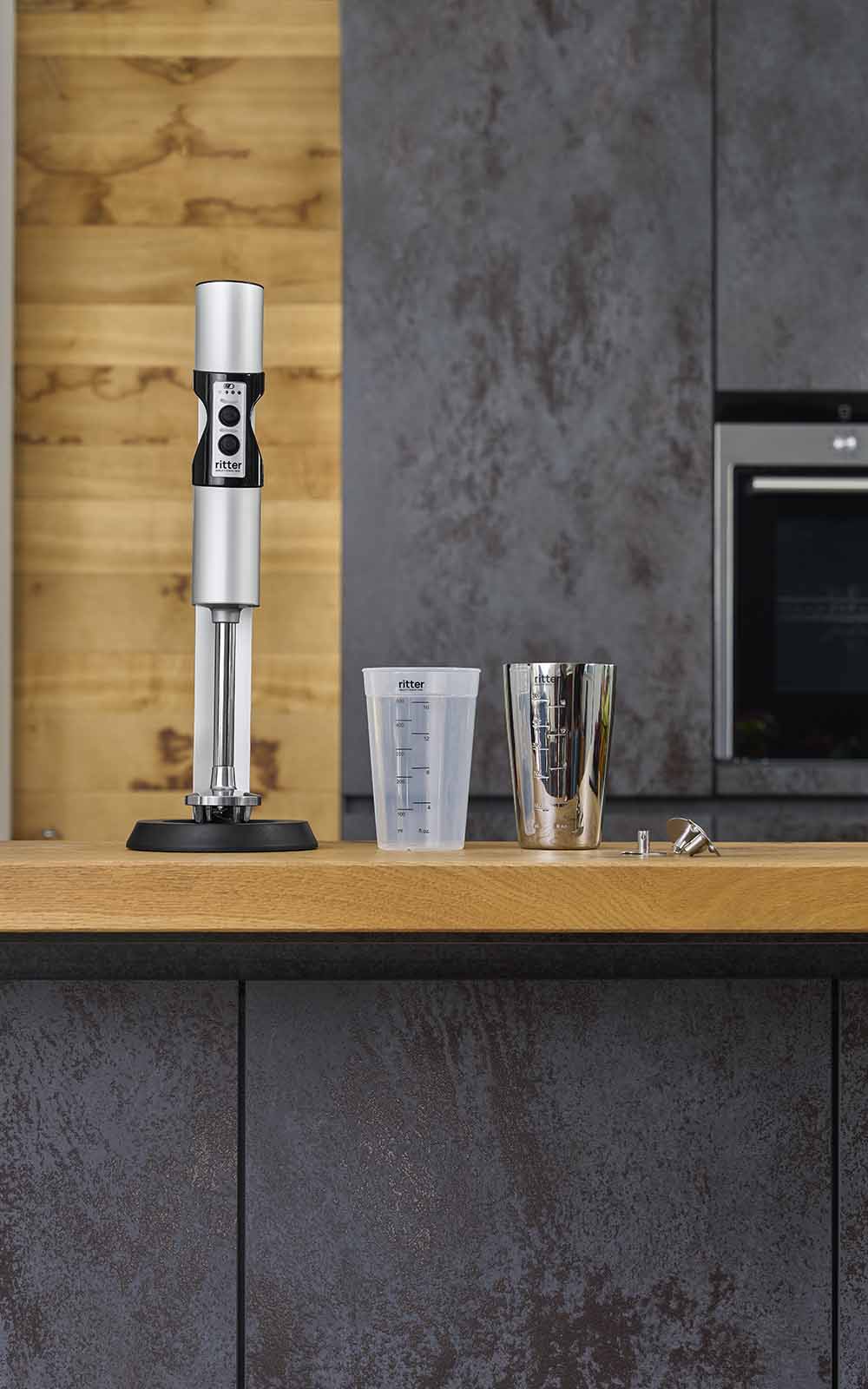
How may we support you?
Get in touch with us quickly and easily. One of our trained and experienced employees will be happy to assist you.
Fitting and accessories
The optional accessories make the use of the ritter built-in hand blender even more versatile. In addition to the universal cutter, three other stainless steel attachments – cutting knife, stirring disk and whipping disk – as well as a stainless steel blending cup are available. The standard version comes with a plastic blending cup and the universal cutter.
Speed Settings
Blending cup
As a matter of fact, the ritter hand blender can be used in any cup with a flat base, including cooking pots and pans. For blending, narrow and tall cups are much better suited than flat and wide pots, because the risk of splashing is lower.
In order not to damage coated pots, the attachments must always be inserted correctly. Make sure that the slot on the attachment is firmly seated on the drive shaft pin. In addition, care should be taken not to damage the bottom or walls of coated pots with the metal cutter cover.
More application tips
The built-in hand blender should not be switched on until the blender (the cover including attachment) is in the cup. This also means that the hand blender should always be switched off before removing it from the cup.
It is also important that the hand blender is always led to the cup and not vice versa.
To switch on the hand blender, hold down the unlock button and within 2 seconds briefly press the power button located directly below it. The unlock button must be kept pressed during operation. The hand blender starts with the maximum speed setting. To change the speed setting, briefly press the power button. To switch off the device, simply release the unlock button.
During the use of the built-in hand blender, a few things should be taken into account in order to process food even better:
As a general rule, processing food with liquids is always easier than processing dry foods. When processing food with liquids, please note that the hand blender should not be switched on until it reached the bottom of the cup. When processing food without liquids, the hand blender should be switched on first and then lowered onto the food to be blended, working from top to bottom through the food.
Use of the universal cutter or cutting blade
If the food to be blended is rather tough or solid, make a slight twisting movement in your wrist, lift the built-in hand blender a little bit and lower it again onto the food to be blended applying light pressure. Be mindful not to press the hand blender too hard on the food.
If the attachment begins to block, the hand blender automatically switches into a pulsating mode. The device starts to jerk (repeated, fast switching on and off of the device) so that even the toughest food can be processed.
If puréeing or straining soft food, the hand blender is held at an angle into the food. Be careful, however, not to hold the hand blender at an angle which is too steep. It is recommended to let the hand blender run at the highest speed setting at first.
The specially developed shape of both the universal cutter and the cutting blade as well as the suction effect created when holding at an angle do the major part of the job. Caution: The cover must always be completely immersed, otherwise the risk of splashing is very high.
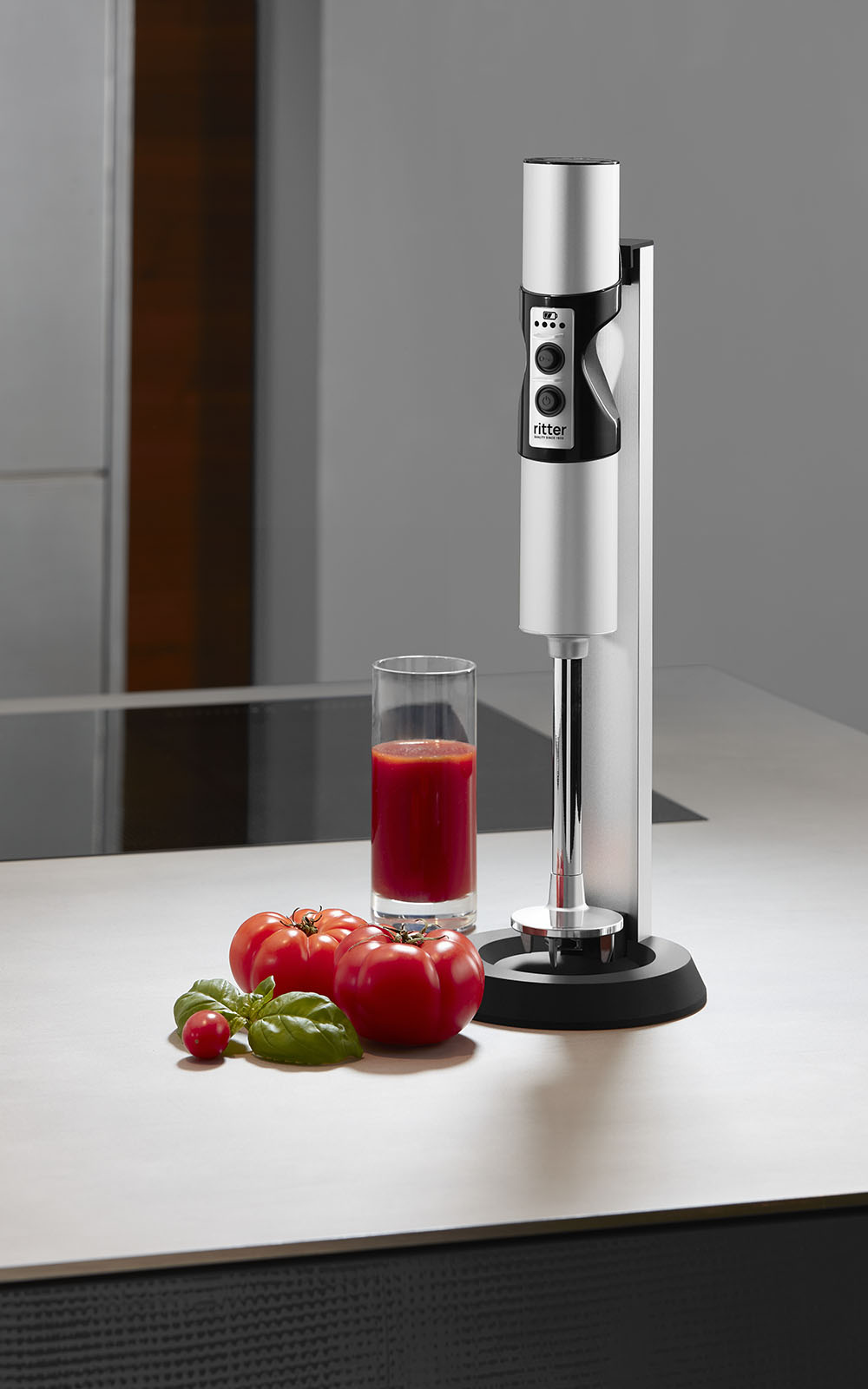
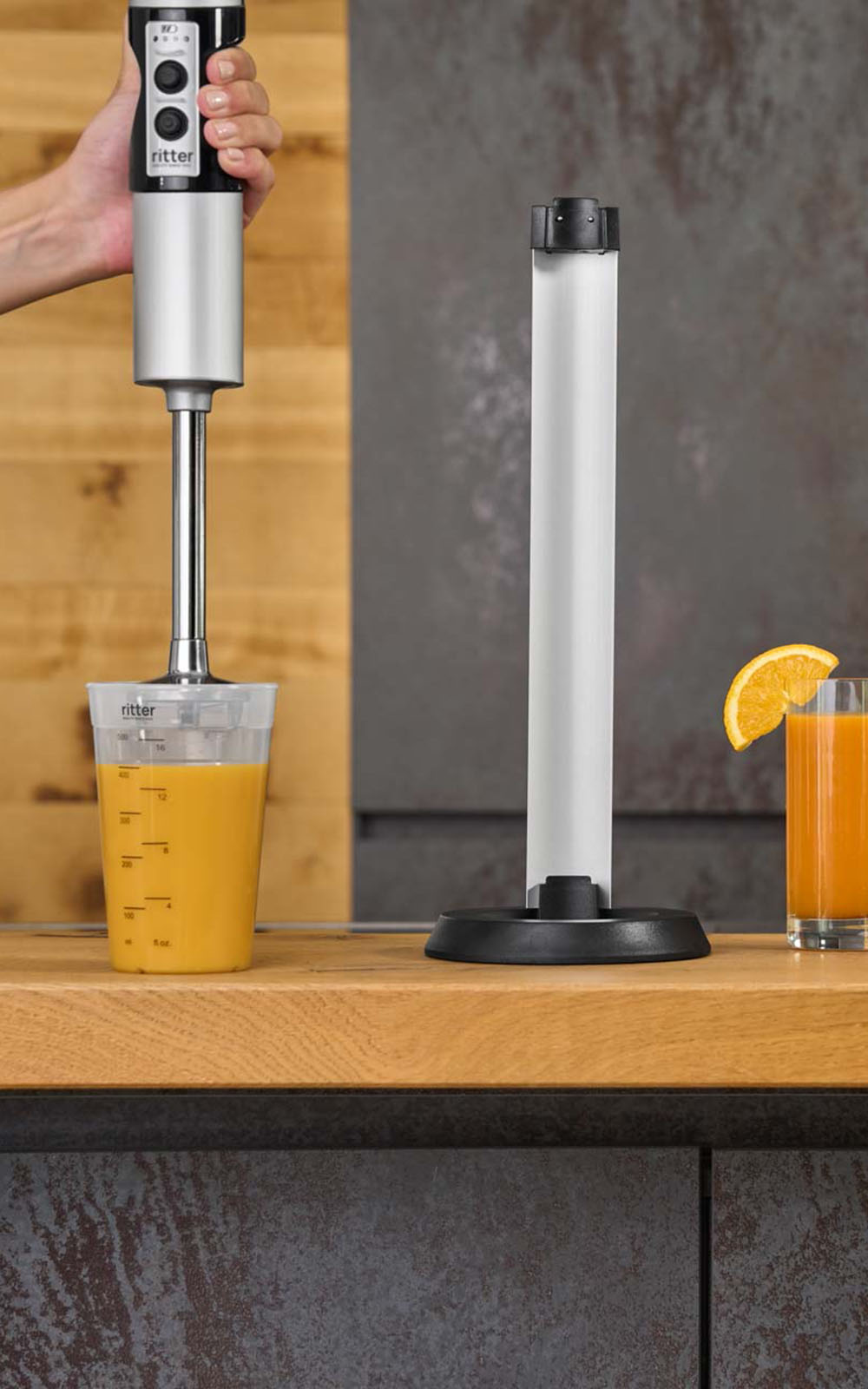
Use of the whipping disk or stirring disk
In order to whip food airily or stir to a cream, the hand blender should be dipped as straight as possible into the food. Do not start the device until shortly above the bottom of the cup. Tilt the hand blender slightly and move it up the rim of the cup.
To prevent possible splashing, use your hand to cover the opening of the blending cup. Be careful and use this method only with lukewarm food. Repeat this process until the blended food has reached the desired texture.
Combination of two attachments
To make shakes, smoothies, sauces and soups particularly creamy, we recommend using the stirring disk as the last step - after using the universal blade, for example.
Cleaning
To prevent food residues from accumulating, clean the hand blender thoroughly immediately after each use by following the steps:
- Dip the hand blender's shaft, including the used attachment, into the blending cup or a similar pot filled with warm soapy water.
- Switch on the hand blender. Let it run shortly in the soapy water.
- Empty the blending cup or pot and refill it with clear, clean water and let the hand blender run again shortly.
- To make sure that no food residues have accumulated, remove the attachment and clean it separately.
- If necessary, wipe the motor unit (upper part with handle), the hand blender’s shaft and the charging station with a damp cloth.
- Carefully wipe dry all rinsed parts.
Note!
Risk of damage of the hand blender:- Do not use abrasive cleaners, aggressive liquids, sponges with rough surfaces, or hard brushes.
- Do not leave the blender shaft in liquids for a longer period, otherwise discolouration may occur.
- The hand blender must not run for a longer period in “idle operation”, as this can lead to damaged seals.

Efficient use and responsibility
Our hand blender combines thoughtful storage, outstanding quality and sustainable technology to provide you with an appliance that is always ready for use, durable and environmentally conscious.
Like all other ritter products, the built-in hand blender is manufactured in Germany. It has a high material quality and mainly consists of high-quality and robust metal.
Our products have always been characterised by high-quality workmanship and durability. All accessories and spare parts can be reordered at any time.
How may we support you?
Get in touch with us quickly and easily. One of our trained and experienced employees will be happy to assist you.



